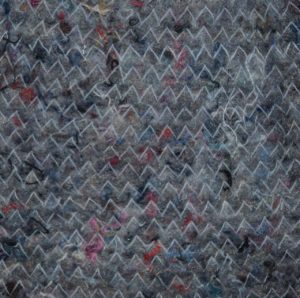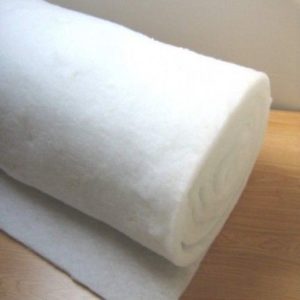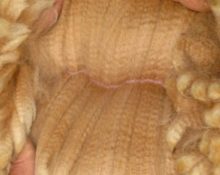To create comfort and coziness, it is important to choose a good quality thermal insulation material, which will be included in products or home textiles. Let's consider two options: traditional batting and modern synthetic padding. To make the right choice for a particular case, consider their fundamental properties.
Pros and cons of batting
 Batting – a non-woven material that has been in demand for quite some time in many areas and industries due to such performance qualities as reliability, practicality and low cost. Other advantages include environmental friendliness, good noise insulation and thermal insulation (equally effective when used at both high and low temperatures).
Batting – a non-woven material that has been in demand for quite some time in many areas and industries due to such performance qualities as reliability, practicality and low cost. Other advantages include environmental friendliness, good noise insulation and thermal insulation (equally effective when used at both high and low temperatures).
With all the advantages of batting, it has significant disadvantages:
- quite heavy weight (average density varies from 200 to 400 grams per square meter);
- the ability to absorb water well, due to which a wet cotton layer will take a very long time to dry;
- during use, fibers may roll up and have uneven distribution;
- Using natural wool can cause moths.
Properties of padding polyester
 Due to its low price, synthetic winterizer is an affordable non-woven synthetic insulation material, which is a layer of polyester fibers combined into a homogeneous fabric in different ways (for example, thermal). The main advantages compared to batting are lightness, elasticity, the ability to not absorb moisture and ease of care for products.
Due to its low price, synthetic winterizer is an affordable non-woven synthetic insulation material, which is a layer of polyester fibers combined into a homogeneous fabric in different ways (for example, thermal). The main advantages compared to batting are lightness, elasticity, the ability to not absorb moisture and ease of care for products.
However, there are also disadvantages: allergic reactions are possible with the adhesive manufacturing method (undesirable for children's products), and during use, the fibers can come out through the front side of the fabric.
Important! Synthetic insulation is not suitable as insulation for workwear (when working with open fire, chemical elements).
Historical reference
The place where batting, consisting of cotton or wool wadding attached to a mesh fabric, was originally made, is located in France. The main reason is the search for an alternative to expensive fur products. Warm and cheap batting quickly became popular among people of varying incomes as a lining for coats and jackets. The low cost is due to the use of inexpensive raw materials. For centuries, production technology has remained virtually unchanged.
Which material is warmer
If we compare in terms of thermal insulation, then batting will be preferable, since synthetic winterizer retains heat much worse.
For sewing and insulating which items is batting ideal?
Due to its remarkable heat-insulating properties, this material is widely used in many economic and technical fields for the manufacture of:
- special clothing and accessories for outdoor activities (gloves, hats, pants, overalls, sleeping bags and much more);
- bedding for children and adults (mattresses and pillows);
- furniture upholstery;
- various types of household appliances (pot holders for the kitchen).

Reference! It is worth noting the popularity of using this insulation in the construction industry as a gasket for flooring, as well as wall insulation.
For what purposes is synthetic winterizer most often used?
This insulation has found its application in many areas:
- production of clothing, especially for the autumn-spring period;
- furniture direction (layering in sofas, armchairs);
- as a filler for pillows and blankets;
- for insulating quilted winter shoes;
- as a filter material for ventilation and air conditioning.


 2
2





